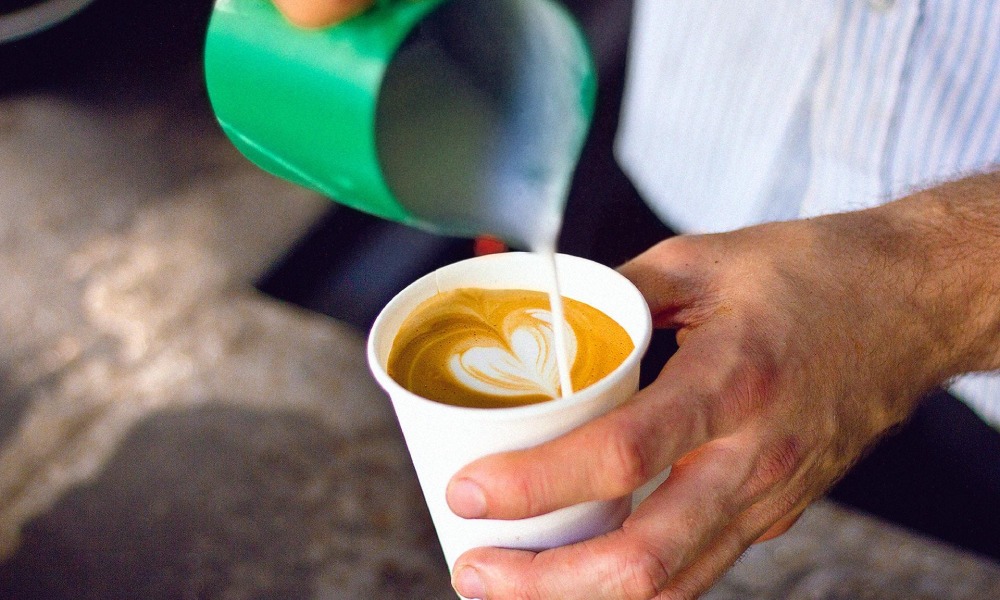How arabica-robusta blends can save coffee shops
Jordan Montgomery speaks with Michał Sowiński of MAMAM Coffee about how arabica-robusta blends can help coffee shops combat the pressure of rising costs.
Coffee shops worldwide have faced a slew of financial and physical crises over the last three years, from container shortages to spiralling energy costs.
Each one in turn has chipped away at profit margins, making it increasingly difficult for coffee shop owners to operate effectively.
According to Michał Sowiński, the co-founder of MAMAM Coffee in Poland, specialty coffee shops in particular have struggled as their costs of production are already high, yet prices have been more or less static.
“High-quality wine costs more and fine dining restaurants are more expensive – but with coffee the price difference between a specialty coffee shop and a mediocre coffee shop is marginal,” he says. “I am looking forward to a day where there will be a difference and people will be willing to pay more for a high-quality product, like it happens in some other industries.”
However, while it is true that some specialty coffee shops have struggled to stay afloat, the sector has also repeatedly shown its resilience and ability to find solutions in the face of adversity.
One of the latest is the introduction of arabica-robusta blends that have helped keep down costs and meet consumer preferences for high-quality coffee.

The benefits of arabica-robusta blends
Increasing the price per cup may seem like the most obvious way for coffee shops to tackle rising costs. Yet in such a fiercely competitive market, most are reluctant to do so, at least enough that profit margins stay the same.
Therefore, although many maintain that coffee prices must rise for the industry to survive, Michał explains that some coffee businesses are now hoping that steady or more competitive pricing will result in a consistent cash flow and higher volume sales.
“Some roasteries are raising prices to keep the same profit margins,” he says, “while others have decided to keep approximately the same price range, hoping that having a lower margin will result in bigger quantities being sold.”
Another solution is to cut costs, such as by adopting modern technology and automation that improves workflow and reduces the need for expensive labour. However, with roasted coffee being one of the largest expenses for coffee shops, some of the most significant savings may come from using a wider variety of coffee species in blends – namely, robusta.
Arabica-robusta blends have gained in popularity with coffee roasters and coffee shops, offering a product that is attractive to customers whilst being a cost-effective alternative to pure arabica blends.
When paired with their more delicate and sweet arabica counterparts, the more intense and higher-bodied robusta coffees provide a cheaper blend component that may attract a wider variety of customers with varying preferences.
Although many coffee businesses have already begun using arabica-robusta blends to manage costs, Michał believes that stigmas surrounding robusta coffees will be hard to shake. “I think that the specialty coffee industry is still a bit scared of robusta, as the quality of most of the available on the market products are far away from what they are used to with arabica,” he says.
The development of higher-quality, “fine” robustas is improving the standard of robusta coffees across the board. But it is also closing the price gap between robusta and arabica, with the average market price of robusta coffees currently more than 50% higher than it was at the same point three years ago.
Michał explains that while this might not result in significantly cheaper green coffee, roasters and coffee shops may be able to make savings elsewhere, particularly in the volume of coffee used in beverage preparation.
“Although there is a small market of fine robustas that showcases that species in a very nice way, fine robusta is not really much cheaper than arabica,” he says. “It could result in using less coffee in the cafe, as you can easily pull lower dosed shots that are going to be more present in flavour in the beverages with lower doses of coffee.”

Will customers accept the shift?
Arabica-robusta blends certainly offer a way forward for coffee businesses looking to circumvent rising costs. Whether the businesses themselves can convince consumers to accept them in place of their favourite arabicas is another question.
Specifically, if coffee shops start incorporating more robusta coffees into their blends, it’s perfectly reasonable to expect some to object to paying the same price they did for 100% arabica blends just a few months ago.
“For the last couple of years we have been pushing in our customers’ heads that 100% arabica is better than a blend with robusta – and it’s going to be hard to change again,” Michał says.
The decision, as he explains, is how these businesses choose to price and market these blends to their customer base, highlighting a more diverse range of flavours and textures that can be experienced with a multi-species blend, motivating customers to come back and try more.
“I’d say the main positives are that the flavour range of a blend can be much wider than using just arabica,” he says. “There are some flavours in robusta (also positive flavours) that you can’t find in arabica, and sometimes it can also have a positive impact on the texture of espresso.”
It may not only be coffee shops that may be able to take advantage of arabica-robusta blends. The increasing use of superautomatic machines in the Horeca market and in coffee shops may provide an avenue for arabica-robusta blends to gain in popularity, allowing them to become more accepted across the wider industry.
“Obviously approaching hotels would be hard with blends made with fine robustas that are not much cheaper than arabicas, but cafés are becoming more and more open to that option,” Michał adds.
“Hotels are usually highly oriented on the lowest possible price for consumable quality so here we would need to go with blends based on lower quality products, or robusta coffees not graded as fine robusta.”
Whatever businesses do, it is paramount that they believe in it themselves. Otherwise, they can’t reasonably expect their customers to embrace the change, too.








